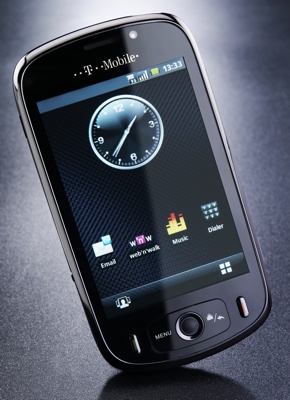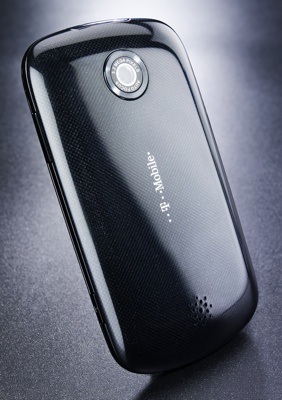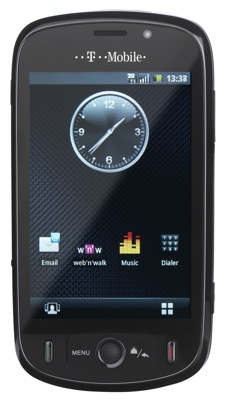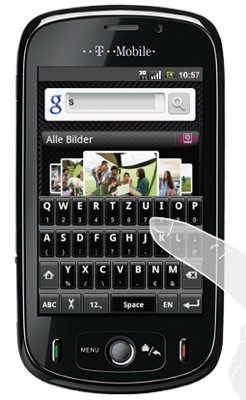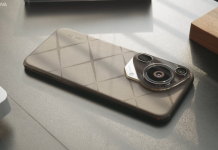Early last year, Huawei was all set to make a big announcement at CES. For the first time ever in the U.S., the telecommunications giant was going to launch its smartphone through a carrier. Just when things were looking good for the Chinese smartphone maker, the U.S. carrier that was supposed to launch its phone, backed out. The relationship between Huawei and U.S. companies has deteriorated ever since with the latest blow being the inability to even use Google apps on its new smartphones.
But outside of the U.S., T-Mobile still sells Huawei smartphones. And their relationship is actually pretty old, with the carrier selling Huawei rebranded Android phones as far back as 2009! And when did it all begin? With Huawei’s first Android smartphone!
It was the year 2009, and Huawei was still young in the smartphone market. But the company was determined to make its mark in the industry. It was one of the first smartphone makers to jump on the Android bandwagon. After the world’s first Android smartphone, the HTC Dream aka T-Mobile G1 was released in February 2009, T-Mobile launched another Android model, this time made by Huawei, in October 2009.
Back when the T-Mobile Pulse (also known as the Huawei U8220) was launched in the market, it was one of the cheapest Android phones available. Another highlight of the phone was its large 3.5-inch display. In comparison, the HTC Dream featured a slightly smaller 3.2-inch panel. And with a responsive touch screen display and HVGA 480 x 320-pixel resolution, the phone offered pretty good features for its starting £185 price in the UK. T-Mobile UK also offered a £19.99 + £10 top up on PAYG (Pay As You Go) plan, making it extremely cheap for first time Android adopters. In case you noticed, the Pulse was launched in the UK and some other markets in Europe, and not in the U.S.
⇒ Editor’s Pick: Huawei may come with a solution for adding Google apps on Mate 30 series
T-Mobile Pulse offered an excellent Android experience at an Affordable Price
The Pulse came with a 3.5-inch HVGA display which was pretty good for its time. The phone, made out of plastic, was slightly curved at the back. There was a unique carbon fiber pattern on the back of the phone which looked cool. What made it even cooler was that the phone’s theme had a similar Carbon fiber pattern.
Along with touchscreen input, you could use its trackball and home and back buttons to navigate through the Android OS. It ran Android 1.5 Cupcake with Google Apps installed. You could update it up to Android 2.1 Eclair, with custom ROMs further bringing v2.2 to the device. There were two more buttons on either side of the trackball, a call button on the left and an end button on the right. There were also volume buttons as well as a dedicated camera shutter button. The phone supported MicroSD cards, with a 2GB card coming right inside the box.
Interestingly, Huawei decided to use a 2.5mm headphone jack on the device, instead of the traditional 3.5mm jack. But it was generous enough to provide a 2.5mm to 3.5mm adapter so that you could listen to music with your everyday headphones. There was a decent 1500mAh battery on board, which wasn’t great but did the job of keeping the phone running for a day. The 3.2MP camera was nothing to boast about. There was a low-resolution front camera as well for video calls.
A highlight of the T-Mobile Pulse was its 3G support. For its low price, it brought HSPA speeds along with other connectivity features such as Wi-Fi, Bluetooth, and even A-GPS.
T-Mobile Pulse had a ‘Mini’ Version Too!
The original Pulse seems to have done well to warrant a release of a T-Mobile Pulse ‘Mini’ version. This mini model was released in May 2010 with a tiny 2.5-inch display with lower resolution but still supporting HSPA 3G speeds. The phone came with the Snapdragon S1 processor with a 3.15MP rear camera, a dedicated 3.5mm headphone jack, A-GPS, and Android 2.1 Eclair out of the box. Oh, there was no selfie camera on this model, unlike the larger ‘Pulse’ sibling.

Huawei entered the Android market with these low-end models that many of us don’t even remember. But the company has used the same Android platform to grow into the world’s second-largest smartphone maker, leaving behind big names such as Apple and Nokia.
It is enlightening to see how Huawei started its journey in the Android ecosystem with a carrier partnership from T-Mobile. But now, it might have to drop the very thing that pushed it to the top of the smartphone market. And it took just ten years for this to happen.
Huawei could be forced to switch from Android to its own HarmonyOS in the coming months. And if things get worse, jumping off the Android bandwagon could be its only option.
UP NEXT: Huawei P40 could come running HarmonyOS out-of-the-box, hints CEO Richard Yu
Check out some of our previous Throwback Tech Thursday articles below!
- Throwback Tech Thursday: We Revisit the Best Selling BlackBerry Curve Series
- Throwback Tech Thursday: Engaging the Legendary Nokia N-Gage!
- Throwback Tech Thursday: We Revisit Samsung’s Crazy 10X Optical Zoom Smartphone
- Throwback Tech Thursday: We Revisit Nokia’s Crazy Lipstick Phone (7280)
- Throwback Tech Thursday: Nokia N9’s Weird Selfie Camera Revisited
- Throwback Tech Thursday: World’s First Android Phone Revisited
- Throwback Tech Thursday: We Revisit the World’s First Camera Phone & Its Selfie Camera

